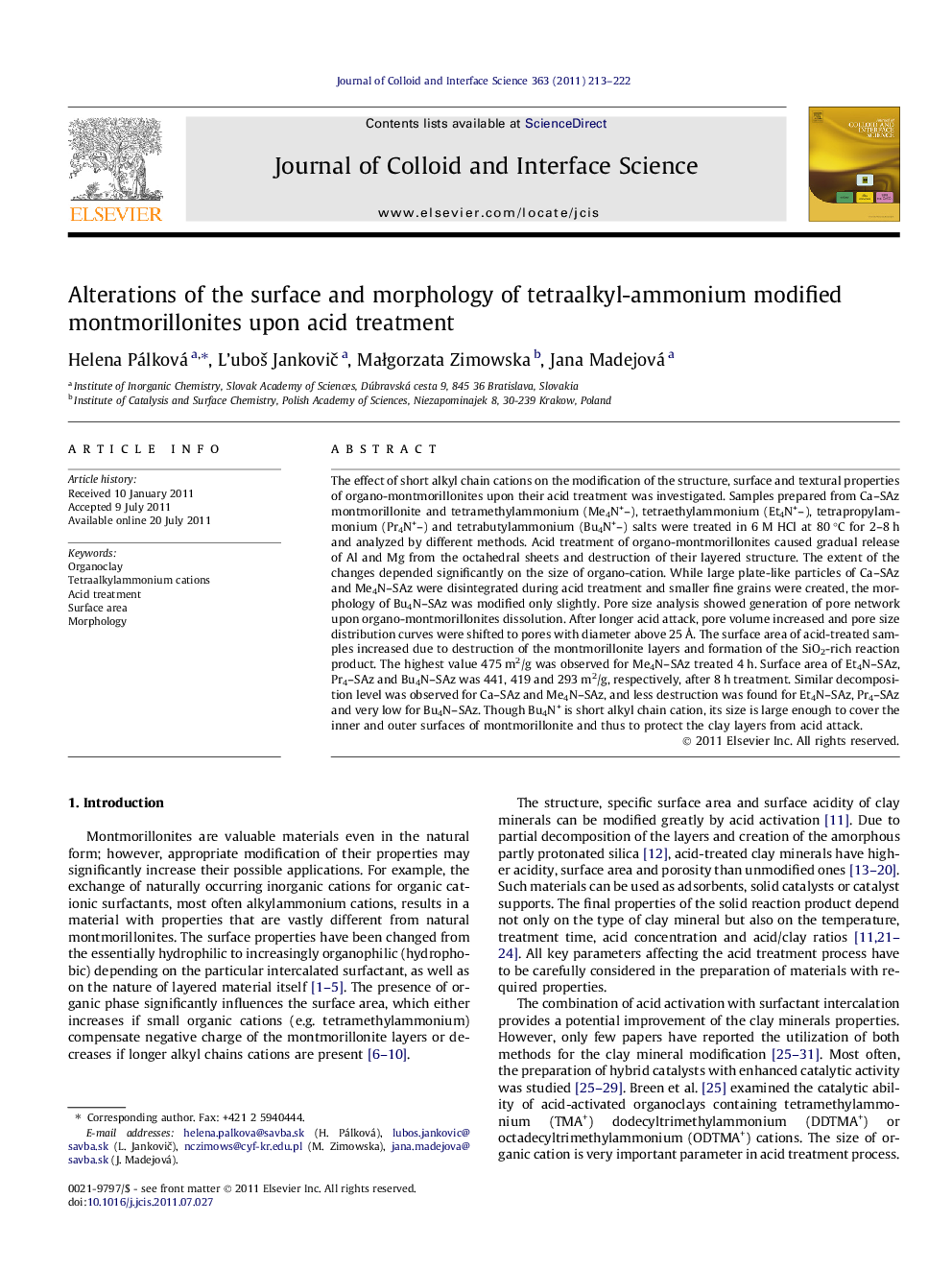| کد مقاله | کد نشریه | سال انتشار | مقاله انگلیسی | نسخه تمام متن |
|---|---|---|---|---|
| 608511 | 880597 | 2011 | 10 صفحه PDF | دانلود رایگان |

The effect of short alkyl chain cations on the modification of the structure, surface and textural properties of organo-montmorillonites upon their acid treatment was investigated. Samples prepared from Ca–SAz montmorillonite and tetramethylammonium (Me4N+–), tetraethylammonium (Et4N+–), tetrapropylammonium (Pr4N+–) and tetrabutylammonium (Bu4N+–) salts were treated in 6 M HCl at 80 °C for 2–8 h and analyzed by different methods. Acid treatment of organo-montmorillonites caused gradual release of Al and Mg from the octahedral sheets and destruction of their layered structure. The extent of the changes depended significantly on the size of organo-cation. While large plate-like particles of Ca–SAz and Me4N–SAz were disintegrated during acid treatment and smaller fine grains were created, the morphology of Bu4N–SAz was modified only slightly. Pore size analysis showed generation of pore network upon organo-montmorillonites dissolution. After longer acid attack, pore volume increased and pore size distribution curves were shifted to pores with diameter above 25 Å. The surface area of acid-treated samples increased due to destruction of the montmorillonite layers and formation of the SiO2-rich reaction product. The highest value 475 m2/g was observed for Me4N–SAz treated 4 h. Surface area of Et4N–SAz, Pr4–SAz and Bu4N–SAz was 441, 419 and 293 m2/g, respectively, after 8 h treatment. Similar decomposition level was observed for Ca–SAz and Me4N–SAz, and less destruction was found for Et4N–SAz, Pr4–SAz and very low for Bu4N–SAz. Though Bu4N+ is short alkyl chain cation, its size is large enough to cover the inner and outer surfaces of montmorillonite and thus to protect the clay layers from acid attack.
Figure optionsDownload high-quality image (100 K)Download as PowerPoint slideHighlights
► Surface properties of organo-montmorillonites dissolved in HCl have been examined.
► Resistivity to acid treatment increases with increasing length of the alkyl chains.
► The highest specific surface area is observed for Me4N-sample dissolved for 4 h.
► The pore volume and pore size increase with prolonging time of acid treatment.
► Pores with diameter above 25 Å are created upon acid treatment.
Journal: Journal of Colloid and Interface Science - Volume 363, Issue 1, 1 November 2011, Pages 213–222